Numismatics
16-1. 1787 Fugio Newman 1-B.
Raw. Judged AG 3. W-6600. Breen 1302. Rarity 4. Small old hole at about 6 o’clock, probably for suspension on charm bracelet or
at about 6 o’clock, probably for suspension on charm bracelet or pendant, through “ne” of “Mind Your Business.” A venerable
pendant, through “ne” of “Mind Your Business.” A venerable example of this scarce “Cross After Date, United States” Red Book
example of this scarce “Cross After Date, United States” Red Book variety, with much visual interest. Its obverse was used for both
variety, with much visual interest. Its obverse was used for both circulation strikes and patterns, such as the famous American
circulation strikes and patterns, such as the famous American Congress, now a mega-dollar coin. The reverse die saw use only for
Congress, now a mega-dollar coin. The reverse die saw use only for this variety. Obverse marbled with delicate milk chocolate and dark
this variety. Obverse marbled with delicate milk chocolate and dark coffee patination; date, ends of numerous sunrays and other
coffee patination; date, ends of numerous sunrays and other devices legible. Reverse toned in topaz, fine granularity under
devices legible. Reverse toned in topaz, fine granularity under magnification, some characteristic planchet flaws, but all letters of
magnification, some characteristic planchet flaws, but all letters of “United States” legible to various degrees. A charming example of
“United States” legible to various degrees. A charming example of an interesting variety that is relatively costly, even in lower grades.
an interesting variety that is relatively costly, even in lower grades. With its white 2x2 holder c. 1967 (at that time considered a Rarity
With its white 2x2 holder c. 1967 (at that time considered a Rarity 6). “All Cross After Date varieties are in strong demand due to their
6). “All Cross After Date varieties are in strong demand due to their distinctive style and their listing in the Red Book”--Whitman
distinctive style and their listing in the Red Book”--Whitman Encyclopedia of Colonial and Early American Coins, Bowers.
Encyclopedia of Colonial and Early American Coins, Bowers. Closeup color photographs of obverse and reverse of all coins on website and furnished by e-
Closeup color photographs of obverse and reverse of all coins on website and furnished by e- mail. $190-250
mail. $190-250
16-2. 1787 Fugio Newman 13-X.
2013 ANACS AU 50. W-6855. Rarity 2. “Double clip,” one an extremely shallow
“Double clip,” one an extremely shallow bite between about 10:15 to 10:45
bite between about 10:15 to 10:45 o’clock. Impressed curved line on
o’clock. Impressed curved line on reverse between 3 and 4, touching two
reverse between 3 and 4, touching two rings, possibly a stray clip mark, else a
rings, possibly a stray clip mark, else a handsome example, with sharp
handsome example, with sharp definition and a bronze-like tone.
definition and a bronze-like tone. Probably from Bank of N.Y. hoard. With
Probably from Bank of N.Y. hoard. With its white 2x2 holder c. 1967. Whitman Encyclopedia (Bowers) c.v. 4000.00. $1200-1400
its white 2x2 holder c. 1967. Whitman Encyclopedia (Bowers) c.v. 4000.00. $1200-1400
16-3. 1787 Fugio Newman 17-S.
2013 ANACS VF 20 details. W-6935. “Corroded,” an extremely light and
“Corroded,” an extremely light and intermittent microfine granulation, else
intermittent microfine granulation, else with much original gloss, good gross
with much original gloss, good gross definition, and flattering mahogany
definition, and flattering mahogany coloration with currency-green cast. Not
coloration with currency-green cast. Not mentioned on label, what appears to be a
mentioned on label, what appears to be a minute beveled clip between about 7:30
minute beveled clip between about 7:30 and 8 o’clock, seen on obverse only, and presumably a planchet imperfection. In all, an
and 8 o’clock, seen on obverse only, and presumably a planchet imperfection. In all, an interesting example of this variety. With its white 2x2 holder c. 1967, at that time considered
interesting example of this variety. With its white 2x2 holder c. 1967, at that time considered Rarity 7; all early American coins in this section have been off the market since then. Fugios
Rarity 7; all early American coins in this section have been off the market since then. Fugios were “the first coins issued by authority of the United States...”--Official Red Book. Whitman
were “the first coins issued by authority of the United States...”--Official Red Book. Whitman Encyclopedia (Bowers) c.v. 1800.00. $425-575
Encyclopedia (Bowers) c.v. 1800.00. $425-575
16-4. 1787 Fugio Newman 21-I.
2013 ANACS AG 3. Rarity 5. Warm caramel toning. Several depressions, possibly planchet flaws, in central portion of obverse, one on reverse, but sufficient
planchet flaws, in central portion of obverse, one on reverse, but sufficient definition to permit attribution of this rather scarce variety, noted for its
definition to permit attribution of this rather scarce variety, noted for its sometimes dramatic clash marks, and a perfectly suitable entry example. With its
sometimes dramatic clash marks, and a perfectly suitable entry example. With its white 2x2 holder c. 1967. $80-120
white 2x2 holder c. 1967. $80-120
16-5. Fugio New Haven “Restrike.”
2013 ANACS EF 45 details. Newman 104-FF. W-17560. Yellow bronze. “Corroded,” the obverse with tortoise shell effect, reverse with verdigris bleu-
“Corroded,” the obverse with tortoise shell effect, reverse with verdigris bleu- cheese spotting, but the underlying coin a vivacious reddish tone, the whole with
cheese spotting, but the underlying coin a vivacious reddish tone, the whole with character and appeal. With its white 2x2 holder c. 1967. One tale is that these
character and appeal. With its white 2x2 holder c. 1967. One tale is that these were struck from “old dies found by 14-year-old C. Wylls Betts in 1858 on the site
were struck from “old dies found by 14-year-old C. Wylls Betts in 1858 on the site of the Broom & Platt store in New Haven, where the original coins were made”--
of the Broom & Platt store in New Haven, where the original coins were made”-- Official Red Book. Bowers states mintage 500. $275-350
Official Red Book. Bowers states mintage 500. $275-350
16-6. 1787 Nova Eborac – with Brasher Association.
Historically fascinating New York coinage of the year of the Constitution. 2013 ANACS VF 35 details. “Corroded.” W-5755. Breen 986. Seated figure facing left.
ANACS VF 35 details. “Corroded.” W-5755. Breen 986. Seated figure facing left. Golden olive brown, with surprisingly lustrous highlights. Small pit in hair on
Golden olive brown, with surprisingly lustrous highlights. Small pit in hair on obverse, another in a letter on reverse, uniform granularity with the aspect of an
obverse, another in a letter on reverse, uniform granularity with the aspect of an ancient rather than colonial, but in all, a charming example. With its yellow 2x2
ancient rather than colonial, but in all, a charming example. With its yellow 2x2 holder c. 1967, with old price 85.00. A private New York issues of 1787, one of the
holder c. 1967, with old price 85.00. A private New York issues of 1787, one of the others being ... Brasher’s doubloon. Indeed, noted numismatist Anthony
others being ... Brasher’s doubloon. Indeed, noted numismatist Anthony Terranova “discovered punch link evidence associating these coppers to the
Terranova “discovered punch link evidence associating these coppers to the Brasher doubloons, and Breen has shown them to be stylistically similar to coins
Brasher doubloons, and Breen has shown them to be stylistically similar to coins by Brasher and Bailey...It has long been thought the small head Nova Eborac was an independent work produced at a different location.
by Brasher and Bailey...It has long been thought the small head Nova Eborac was an independent work produced at a different location. Recently, (Gary) Trugden used punch evidence to show all issues were prepared by a single engraver, whom he identified as John
Recently, (Gary) Trugden used punch evidence to show all issues were prepared by a single engraver, whom he identified as John Bailey, working in or near New York City.”--coins.nd.edu. Extensive scholarship has been published on the Nova Eborac. $900-1400
Bailey, working in or near New York City.”--coins.nd.edu. Extensive scholarship has been published on the Nova Eborac. $900-1400
16-7. Washington Success Medal, Original Silvered Surface.
2013 ANACS AU 50 details, attributed as “1792-95.” W-10900. Baker 265. Breen 1286. “Damaged,” with three small-diameter counterpunch craters at top, on
1286. “Damaged,” with three small-diameter counterpunch craters at top, on head, forehead, and smooth field; verso undisturbed. Brass. Large. Reeded edge.
head, forehead, and smooth field; verso undisturbed. Brass. Large. Reeded edge. First die, with original silvering, characterized as “rare” by Red Book, variously
First die, with original silvering, characterized as “rare” by Red Book, variously darkened or worn around lettering, else imparting a soft olde-world patina, with
darkened or worn around lettering, else imparting a soft olde-world patina, with hints of purplish undertone. A must for the Washington completist. With its
hints of purplish undertone. A must for the Washington completist. With its white 2x2 holder c. 1967. $1700-2400
white 2x2 holder c. 1967. $1700-2400
16-8. Washington Large Military Bust.
2013 ANACS VF 35, attributed as “1793.” W-10240, Vlack 10-G. Rich art-bronze tone. One mark on reverse between olive branch and head, else the superficial
tone. One mark on reverse between olive branch and head, else the superficial scratches only detectable under magnification, and a rewarding example. With its
scratches only detectable under magnification, and a rewarding example. With its yellow 2x2 holder c. 1967, with old price 65.00. Whitman Encyclopedia (Bowers)
yellow 2x2 holder c. 1967, with old price 65.00. Whitman Encyclopedia (Bowers) c.v. 475.00 (EF-40). $225-275
c.v. 475.00 (EF-40). $225-275
16-9. 1794 Cent.
2013 ANACS EF 40 details. “Corroded.” S-57. B-55. “Button on cap” variety. Head of ‘94. Only moderate granularity to the unaided eye, the date very good,
Head of ‘94. Only moderate granularity to the unaided eye, the date very good, just a touch of irresolution at bottom hook of “9.” Else a complex darkest brown,
just a touch of irresolution at bottom hook of “9.” Else a complex darkest brown, infused with gunmetal and a hint of diffuse sunset red playing on the glossy
infused with gunmetal and a hint of diffuse sunset red playing on the glossy surfaces. Off the market since about 1960s. $3750-4250
surfaces. Off the market since about 1960s. $3750-4250
16-10. 1806 Quarter.
2013 ANACS G 4 details. B-8. “Bent,” to a degree insufficient to be perceived when photographed. Portion of “1” of date appear nearly smooth, but contours of
when photographed. Portion of “1” of date appear nearly smooth, but contours of its upper half discernable under magnification, balance of date bold, suggesting
its upper half discernable under magnification, balance of date bold, suggesting an uneven strike. Portions of most lines of shield on reverse still present; better-
an uneven strike. Portions of most lines of shield on reverse still present; better- than-good details remain of hair and contours of bust’s eyes, nose, and mouth.
than-good details remain of hair and contours of bust’s eyes, nose, and mouth. Light purplish overtone both sides, giving an electric effect. A highly satisfactory -
Light purplish overtone both sides, giving an electric effect. A highly satisfactory - and intensely interesting example of an otherwise costly coin, arguably superior
and intensely interesting example of an otherwise costly coin, arguably superior to others of the same grade. Off the market since about 1960s. $250-300
to others of the same grade. Off the market since about 1960s. $250-300
16-11. 1809 Half Cent.
Rotated dies. 2013 ANACS AU 50. Obverse with notably sophisticated, uniform mahogany tone, with smooth surfaces and reflective devices. $275-325
mahogany tone, with smooth surfaces and reflective devices. $275-325
16-12. 1833 Half Cent.
2013 ANACS AU 50 details. Old cleaning. Soft brassy olive brown, bands of paler toning around periphery, else a pleasing example. $100-130
paler toning around periphery, else a pleasing example. $100-130
16-13. 1853 Half Cent.
2013 ANACS AU 50 details. Old cleaning. Satiny golden devices rising from multi-tone surfaces, with pleasing crisp appearance. Some fine nicks on neck
multi-tone surfaces, with pleasing crisp appearance. Some fine nicks on neck under magnification, else very satisfactory. $85-125
under magnification, else very satisfactory. $85-125
16-14. 1861 Quarter.
2013 ANACS AU 58. Seated Liberty. An arrestingly attractive example, with airbrush-like puffs of smoky topaz toning around some stars and rim beads,
airbrush-like puffs of smoky topaz toning around some stars and rim beads, else hints of semi-matte cartwheels, with considerable visual interest. $240-
else hints of semi-matte cartwheels, with considerable visual interest. $240- 290
290
16-15. 1861-O Half.
2013 ANACS VF 30 details. WB-101. “Rim dings,” essentially limited to five points in saddle between rim and dentils beneath date, two points at 12 o’clock,
points in saddle between rim and dentils beneath date, two points at 12 o’clock, and few on reverse, only significant under magnification. Still a handsome coin,
and few on reverse, only significant under magnification. Still a handsome coin, the soft silvery devices backlit by uniform grey-mink fields. A mint mark with a
the soft silvery devices backlit by uniform grey-mink fields. A mint mark with a fateful history: “The 1861-O quantity includes 330,000 struck under the U.S.
fateful history: “The 1861-O quantity includes 330,000 struck under the U.S. government, 1,240,000 for the State of Louisiana after it seceded from the
government, 1,240,000 for the State of Louisiana after it seceded from the Union, and 962,633 after Louisiana joined the Confederate States. As all these
Union, and 962,633 after Louisiana joined the Confederate States. As all these 1861-O coins were struck from U.S. dies, it is impossible to distinguish one from
1861-O coins were struck from U.S. dies, it is impossible to distinguish one from another”--Official Red Book.... $115-135
another”--Official Red Book.... $115-135
16-16. 1924 Huguenot Commemorative Half.
2013 ANACS MS 65. “Huguenot Walloon Tercentenary, 1624-1924 / Founding of New Netherland.” Oxidation speckling mostly behind “States of...,” honey-
of New Netherland.” Oxidation speckling mostly behind “States of...,” honey- colored tarnish spot between hats of Gaspard de Coligny and William I of
colored tarnish spot between hats of Gaspard de Coligny and William I of Orange, and in lower hemisphere of lettering on reverse. Else an evocative
Orange, and in lower hemisphere of lettering on reverse. Else an evocative example, with pink-orange overtone. $300-350
example, with pink-orange overtone. $300-350
16-17. 1933-D Oregon Trail Commemorative Half.
2013 ANACS MS 66. Interesting example, the subtle sculpting of surfaces (no longer seen in modern computer-designed coinage) imparting complex
longer seen in modern computer-designed coinage) imparting complex reflections, with palest citrine and rose flashes. Tiny oxidation specks in lower
reflections, with palest citrine and rose flashes. Tiny oxidation specks in lower portion of reverse, else a high-condition specimen. $480-540
portion of reverse, else a high-condition specimen. $480-540
16-18. 1934 Texas Commemorative Half.
2013 ANACS MS 66. Superb first-year example retaining the quality of an art medal, rather than commercial coinage. “The Texas Independence Centennial -
medal, rather than commercial coinage. “The Texas Independence Centennial - Remember the Alamo - 1836-1936.” Tiny oxidation specks on few relief areas
Remember the Alamo - 1836-1936.” Tiny oxidation specks on few relief areas of obverse, else luxurious, bottomless luster, with pink-gold flashes at three of
of obverse, else luxurious, bottomless luster, with pink-gold flashes at three of five points of Texas star. $575-675
five points of Texas star. $575-675
16-19. 1936 Lynchburg Commemorative Half.
2013 ANACS MS 64. Lynchburg Sesquicentennial; (Sen.) Carter Glass on obverse. Light contact marks and tiny depressions in field to left of lips, and
obverse. Light contact marks and tiny depressions in field to left of lips, and two on shoulder, else attractive, with rather fascinating hint of lime and palest
two on shoulder, else attractive, with rather fascinating hint of lime and palest gold on obverse and reverse, respectively. $285-350
gold on obverse and reverse, respectively. $285-350
16-20. Unrecorded Variant of Cotton Exposition Medal.
Attractive So-Called Dollar commemorating World’s Industrial & Cotton Exposition, New Orleans, 1884-85, probably copper. HK-unlisted thusly. NGC MS 64 BN, older slab. Obverse: “The Worlds
Exposition, New Orleans, 1884-85, probably copper. HK-unlisted thusly. NGC MS 64 BN, older slab. Obverse: “The Worlds Exposition...,” with globe in sky over vast exhibition hall, flags flying, as HK-143. (The main building was the world’s largest roofed
Exposition...,” with globe in sky over vast exhibition hall, flags flying, as HK-143. (The main building was the world’s largest roofed structure, illuminated with 5,000 electric lights.) Reverse: “Reunion of Mexican War Veteran at N.O. 1846-7,” hands clasped over
structure, illuminated with 5,000 electric lights.) Reverse: “Reunion of Mexican War Veteran at N.O. 1846-7,” hands clasped over crossed rifles with fixed bayonets, eagle above. The Exposition was timed as the centennial of the earliest recorded export of cotton
crossed rifles with fixed bayonets, eagle above. The Exposition was timed as the centennial of the earliest recorded export of cotton from America to England. Some fine nicks in field and rim, else considerable electric lustre highlighting warm coffee brown devices.
from America to England. Some fine nicks in field and rim, else considerable electric lustre highlighting warm coffee brown devices. Only a white metal variety recorded, stated “very rare to extremely rare”--socalleddollar.com. This copper/brass example perhaps the
Only a white metal variety recorded, stated “very rare to extremely rare”--socalleddollar.com. This copper/brass example perhaps the lone survivor. Ex-Spink. $225-275
lone survivor. Ex-Spink. $225-275
Go to Section 17: Civil War II


CATALOGUE 64
Americana
Antiquities
Aviation
Black History
Books & Publications
Civil War I
Civil War II
Civil War Letters
Civil War Cartes
Confederate
Encore
Financial
First Ladies
Fixed Price Starting Lot
2000
Ending the Oceanic Slave
Trade - Liberia
Letters
Maps
Military & Naval
Newspapers
Numismatics
Philatelic & Postal History
Photography
Politics
Presidential
Reference Books Starting Lot
3000
Revolutionary War
Transportation
War of 1812
World War I
World War II
ALSO OF INTEREST:
Automobiliana & History of
Transportation
Highlights of Previous
Auctions

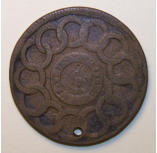
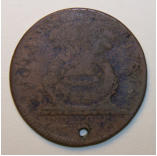
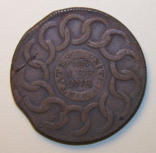
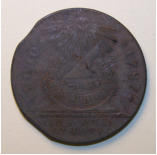
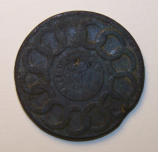
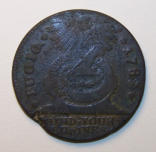
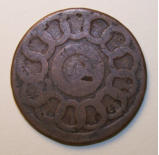
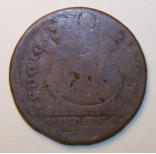
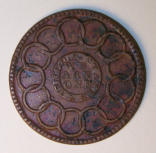
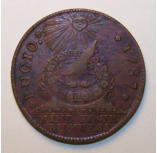
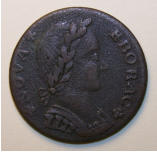
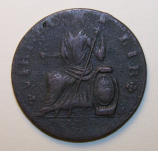
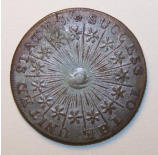
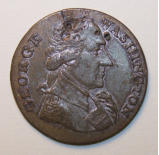
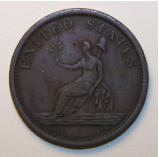
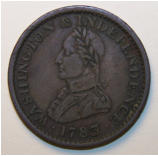
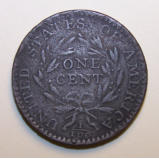
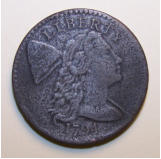
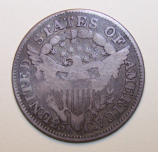

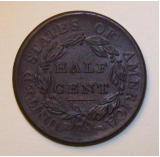
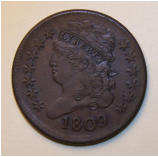
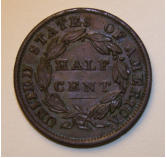
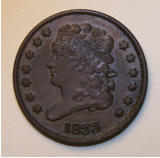
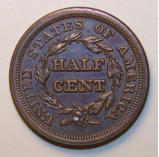
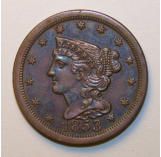
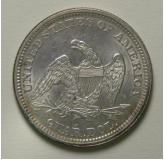
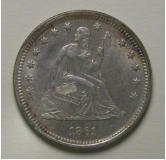
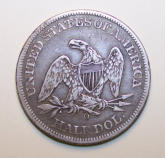
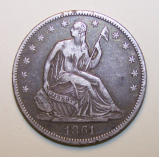
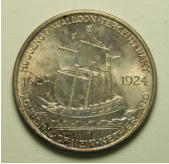
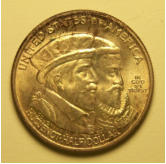
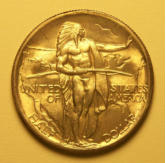
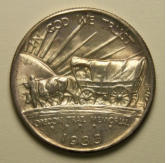
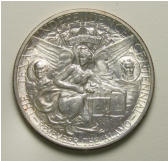
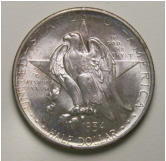
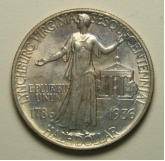
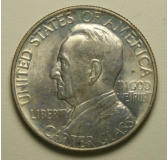
TO FIND OUT CURRENT HIGH BIDS, OR TO PLACE BIDS, JUST CALL 1-914-476-8500 OR e-MAIL
(We do not currently use online bidding)





Home | Auction | Bid Sheet | Preservation Supplies | Authentication and Appraisal Services | Contact Us





